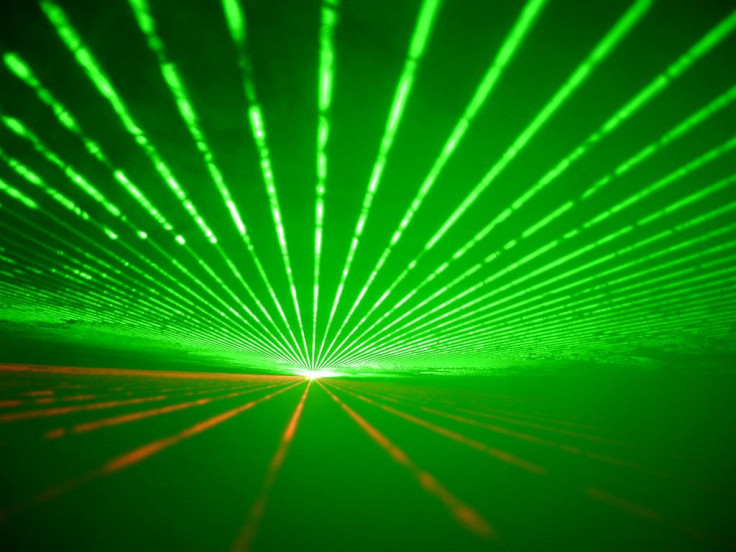Lasers Can Take Your Eye Out: Doctors Warn Of Lasers After Boy Ruptures Blood Vessels In Retinas

Sometime during their childhood, kids become enamored by lasers. They use them to mesmerize cats, confuse passersby outside their windows on a dark night, and they point them at each other, waiting for their friends to notice. The U.S. Food and Drug Administration (FDA), however, has been warning about the dangers lasers pose, because they can literally take an eye out.
A report recently published online in JAMA Ophthalmology details a case in which a 9-year-old boy was hospitalized after being blinded in both eyes by an adult playing with a handheld laser. An examination determined that the laser had ruptured blood vessels in his retinas, causing them to hemorrhage. “Until he came in, no one had realized there was an actual injury and we saw the bleeding,” Dr. Cynthia Toth, a co-author of the report, told Reuters Health. Luckily, the boy's vision in his left eye went back to normal within a week, while vision returned in his right eye after two months.
The laser was taken from a dismantled home theater projector, and reassembled as a toy overseas — anyone can then order them back into the U.S. on the internet. Specifically, the laser is called a Spyder III Pro Arctic, and is classified as a class 4, high-powered 1,250 milliwatt (mW) laser. By comparison, laser pointers, which are part of class 3a, can go no higher than 5 mW, according to the American National Standards Institute. Class 4 lasers can cause “immediate skin hazard and eye hazard from exposure to either the direct or reflected beam,” the FDA’s website says. “You can start a fire with the power that was coming out of that one,” Toth told Reuters.
Advancements in laser technology have led to lasers that are “much better absorbed by melanin in the retinal pigment epithelium and thus have a greater potential for ocular damage,” the doctors wrote. They also wrote that “clinicians should be aware of the signs and symptoms of ocular laser injuries. Vision loss usually occurs immediately after laser exposure. It is often preceded by the perception of a bright flash and occasionally accompanied by an audible popping sound.”
In August, the FDA also warned about the dangers of laser lights, noting that low-cost lasers have “increased in power 10-fold and more” over the last 10 years. “The fact that lasers can be dangerous may not be evident,” Dan Hewett, health promotion officer at the FDA’s Center for Devices and Radiological Health, said in a statement, “particularly to the children who use them as toys, or to adults who supervise them.”
Source: Yiu G, Itty S, Toth C. Ocular Safety of Recreational Lasers. JAMA Ophthalmology. 2014.
Published by Medicaldaily.com



























